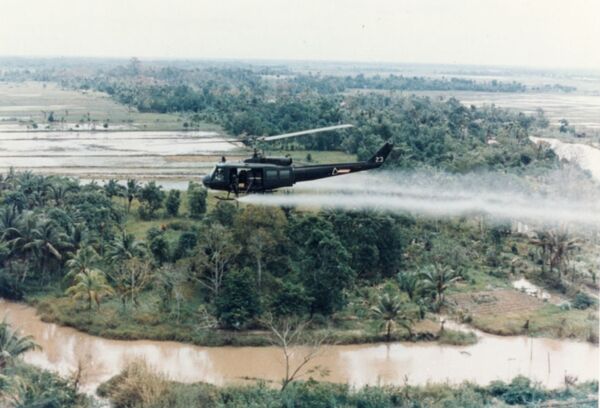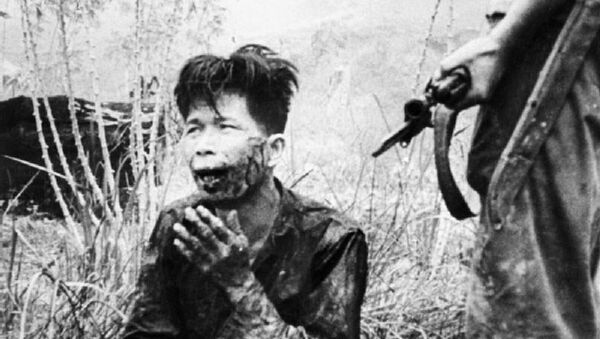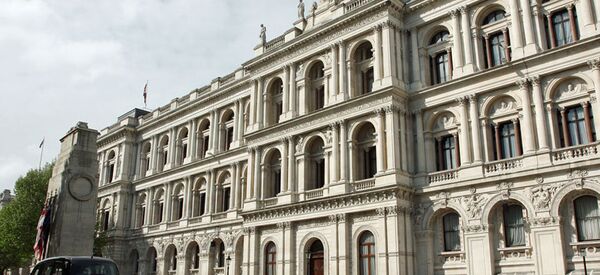At 8.30 am June 16 1948, in the office of the Elphil Estate in Perak, Malaya, three British plantation managers — Arthur Walker, John Allison, and Ian Christian — were killed by a trio of young Chinese assassins. The planned execution represented the culmination of three years of growing unrest in the country under the British Military Administration established at the end of World War II, following Imperial Japan's withdrawal from the region.
Malaya was rich in resources Britain desperately needed to rebuild its ravaged post-war economy, including coal, bauxite, tungsten, gold, iron ore, manganese, and rubber and tin — internal UK government files indicate the latter two industries were the most valuable, in dollar terms, in the entire British Empire.
TODAY IN HISTORY
— British and Commonwealth Military (@BritComMil) June 16, 2018
The Malayan Emergency was declared on 17th June 1948; for the following twelve years battalions of 2GR, 6GR, 7GR and 10GR were on operations against Communist Terrorists in the Malayan jungle. pic.twitter.com/6UGPg3suhJ
"Malaya [is] the greatest material prize in South-East Asia. [Its resources] have very largely supported the standard of living of the people of this country and the sterling area ever since the war ended. What we should do without Malaya, and its earnings in tin and rubber, I do not know," said Lord Ogmore in 1952.
David vs. Goliath
The siphoning off of this vast wealth back to London produced unemployment, falling wages and significant inflation, amongst other deleterious economic ills, a state of affairs that led to increasingly militant strikes and protests by workers and citizens alike, and led thousands to join the ranks of the Malayan Communist Party — and its militant wing, the Malayan National Liberation Army.
Two days later, the British colonial authorities enacted series of harsh emergency measures — including the banning of the MCP and all other left-leaning parties in the country, and detention without trial for those suspected of being communists or of assisting them, and the British military was also dispatched to the country to crack down on insurrectionary activity, "very in defense of the rubber industry," internal Foreign Office files stated unequivocally.
My Dad was in Malaya doing Nat Service in ‘49. This was a book in his collection that I recall. #malayanemergency pic.twitter.com/Z989q16ac8
— Nick Budd (@BuddNicholas) June 16, 2018
In response, an insurgent movement was formed — in a bitter irony, most of its leaders had been trained and armed by Britain to resist the Japanese occupation. So it was the 'Malayan Emergency' began — a term used by officials as their losses wouldn't have been covered by Lloyd's insurers if the action was dubbed a 'war'.
While the poorly armed Malayan insurgents numbered around 6,000 at most, Malayan High Commissioner Gerald Templer was clear — "the hard core of armed communists in this country are fanatics and must be, and will be, exterminated" by any means necessary. As a result, the Royal Air Force conducted regular carpet bombing campaigns — over 4,500 in the first five years of the campaign — and troops showed a callous disregard for civilians. One troop later remarked their efforts were "raw savage success…butchery…horror."
'Body counts' — tallies of the number of people killed by British troops — were shared among army units and regularly updated, and introduced a competitive element to the conflict, with different divisions vying to see who could slay the most. Almost inevitably, this resulted in the arbitrary killing of innocent civilians — perhaps most notoriously, on December 12 1948 British troops surrounded a rubber plantation at Sungai Rimoh, near Batang Kali in Selangor.
This weekend marks 70 years since the start of the Malayan Emergency, a little known yet brutal conflict that lasted 12 years and is considered a precursor to the Indonesian Confrontation. One veteran of the latter has marked the occasion at the @AWMemorial 🇲🇾 #WINNews6pm pic.twitter.com/521OWooOYy
— Emma Groves (@EmGrovesy) June 12, 2018
Civilians were rounded up, with men separated from women and children for interrogation. Subsequently, a total of 24 unarmed villagers were killed by automatic weapons, before the villagers' homes were set on fire. The only adult male to survive the onslaught had fainted, and was presumed dead. Despite several investigations by British authorities since the 1950s, and a re-examination of the case by the Royal Malaysia Police 1993 — 1997, no charges have ever been brought against any of the alleged perpetrators.
The 'Malayan Emergency' began 70 years ago today. Over the next 12 years the British would behead Communists, massacre civilians, airdrop chemical defoliants and proto-cluster bombs, and move 500,000 people to barbed wire camps.
— Empire Exposed (@EmpireExposed) June 16, 2018
All to continue looting Malaya's rubber and tin. pic.twitter.com/NsuXKsUesa
There were also many instances of the corpses of dead guerrillas being exhibited in public, and insurgents being decapitated. While this was an official policy ostensibly designed to aid identification of guerrillas when it was not feasible to remove their bodies from the jungle, many photos circulated of British troops proudly parading with the severed heads of slain Chinese.
Moreover, Dyak headhunters — a tribe from Borneo infamous for collecting severed heads as trophies — were brought in by the British government to support official forces. High Commissioner Templer was clear these fighters should be used "in their traditional role as head-hunters," and believed it "essential" the practice should continue, despite Colonial Office files indicating "there is no doubt under international law" the policy, if employed in wartime, "would be a war crime."
Location, Location, Location
In 1950, British authorities enacted the 'Briggs Plan' — a massive program of forced resettlement of Chinese peasantry in Malaya, which saw around 500,000 (roughly ten percent of Malaya's population) removed from their homes and interned in concentration camps dubbed 'New Villages'. Historian Brian Lapping described the process in shocking detail.
"A community would be surrounded in their huts at dawn, when they were all asleep, forced into lorries and settled in a new village encircled by barbed wire with searchlights round the periphery to prevent movement at night. Before the 'new villagers' were let out in the mornings to work in the paddy fields, soldiers or police searched them for rice, clothes, weapons or messages," he wrote.
Side-by-side with British High Commissioner @VickiTreadell, as 🇦🇺 & 🇬🇧 have always been. #MalayanEmergency pic.twitter.com/CSv9tguJxy
— Andrew Goledzinowski (@AusHCMalaysia) June 9, 2018
An internal British government memo said resettlement aimed to "educate [the Chinese] into accepting" government control, as there was still "a long way to go in conditioning" them to accept policies "which can easily be twisted by the opposition to appear as acts of colonial oppression". However, it was believed resettlement would be effective, on the racist basis "the Chinese mind is schizophrenic and ever-subject to the twin stimuli of racialism and self-interest."
Resettlement was but one strand of a wider policy of collective punishment practised by British forces against villages believed to be aiding insurgents in any form. For instance, in March 1952 Tanjung Malim was made subject to a 22-hour house curfew, with all residents banned from leaving — schools were also closed, all bus services were stopped, and rice rations were slashed for 20,000 residents. The impact of the last measure was so severe the London School of Hygiene and Tropical Medicine wrote to the British Colonial Office, stating Malayans were "chronically undernourished" and facing death.
"This measure is bound to result in an increase, not only of sickness but also of deaths, particularly amongst the mothers and very young children," it stated.
Moving ceremony at “God’s Little Acre”, the famous cemetery in Batu Gajah. #MalayanEmergency pic.twitter.com/7je3f7QZAu
— Andrew Goledzinowski (@AusHCMalaysia) June 9, 2018
Such warnings did not deter the British government one iota — the next month, at Sengai Pelek, a house curfew was introduced, a chain-link fence 22 yards outside the existing barbed wire fence around the town was erected, and rice rations were reduced 40 percent.
Collective punishment practices also included arbitrary detention — as many as 34,000 were interred on this basis in the first eight years of the emergency, with the Foreign Office acknowledging many were detained on the basis authorities deemed them to be a "menace to public security" on some basis or other, but could not be brought to trial due to "insufficient evidence."
Unflattering Imitation
While no doubt highly unpopular in Malaya itself, many British policies were warmly received in the US, and Washington went on to emulate and refine these barbarous techniques during its own imperialist war in Vietnam. For instance, the US military's notorious use of 'agent orange' during the conflict had its origins in the 'Emergency', with the British liberally employing a variety of hazardous herbicides and defoliants, a first in the history of warfare.

The true number of individuals killed or injured by 'trioxone' is uncertain, as officials deliberately obscured the number and size of chemical weapons assaults conducted during the campaign. Again, the designation of the struggle as an 'emergency' rather than 'war' allowed the UK to use the weapons with impunity — the 1925 Geneva Protocol prohibits chemical warfare. As the conflict was an internal security matter, use of herbicidal agents was a matter of police action, akin to the use of CS gas for riot control.
While Malaya was formally granted independence in 1957, up to 70 percent of the profits produced by companies operating in the region flowed back to foreign owners — 14 years later, the vast bulk of mining, manufacturing and construction companies operating in the country were British. It would not be until the late 1970s this inequitable state of affairs would begin to reverse.




